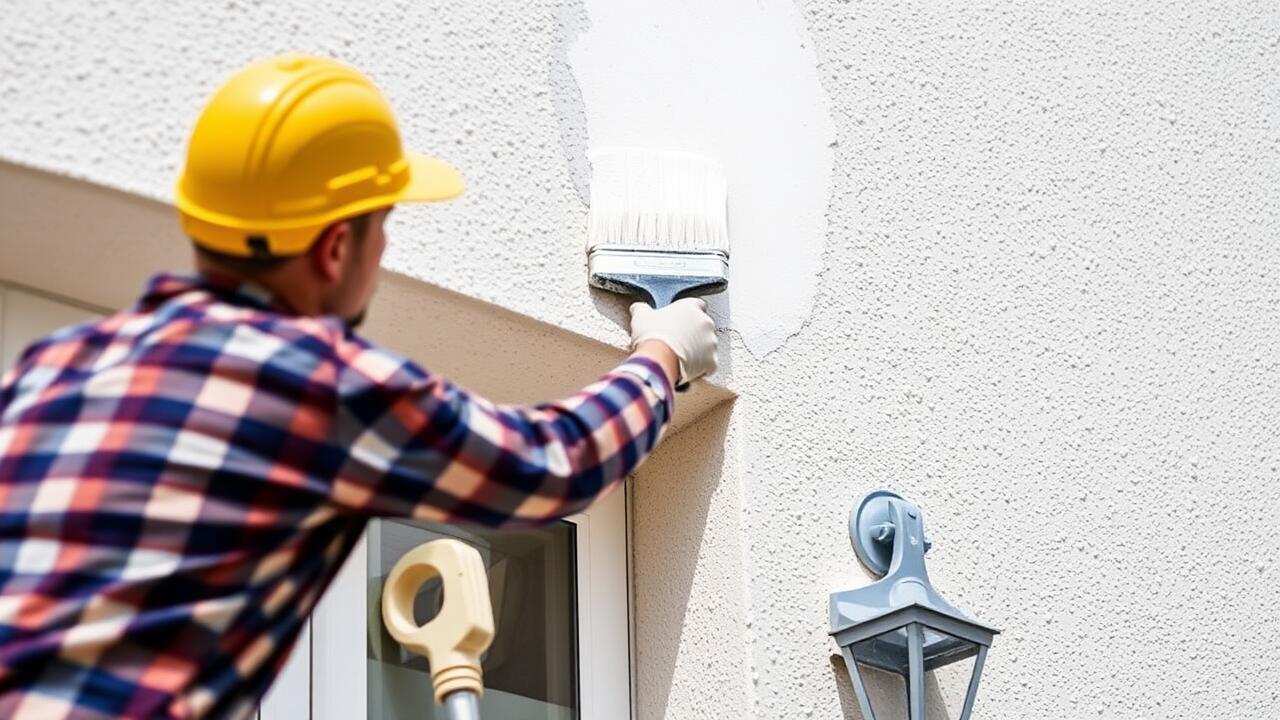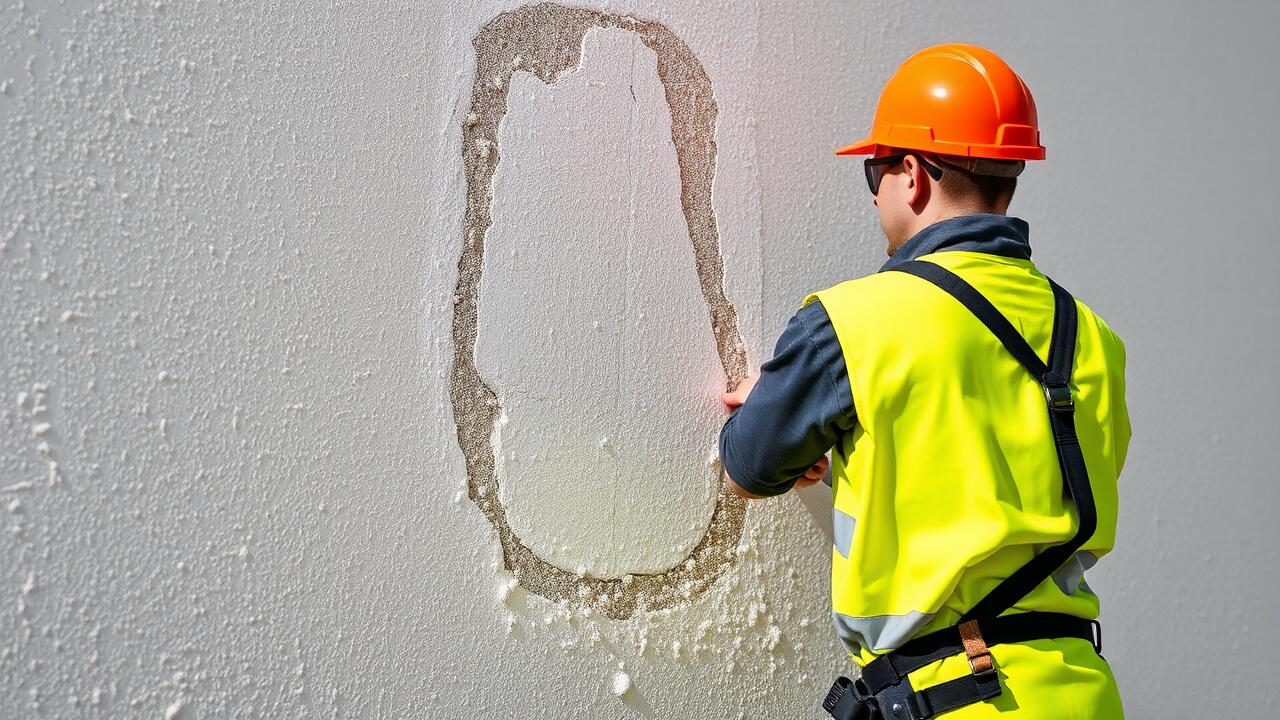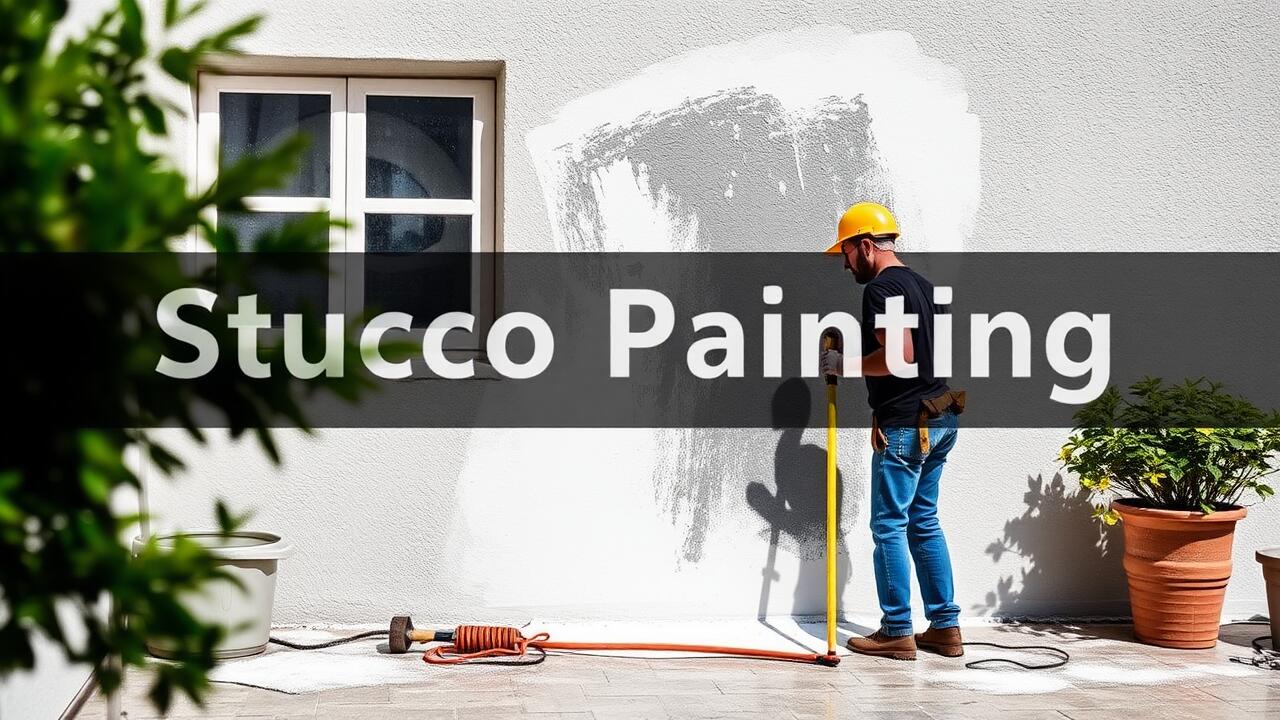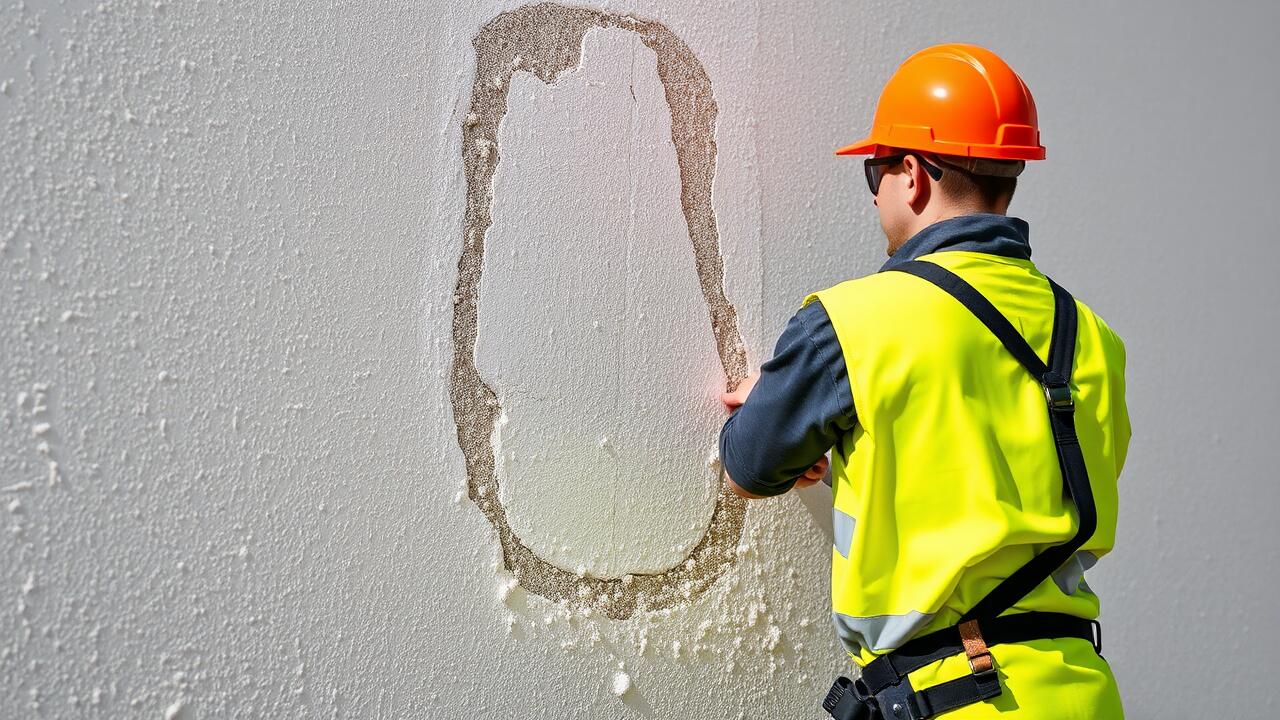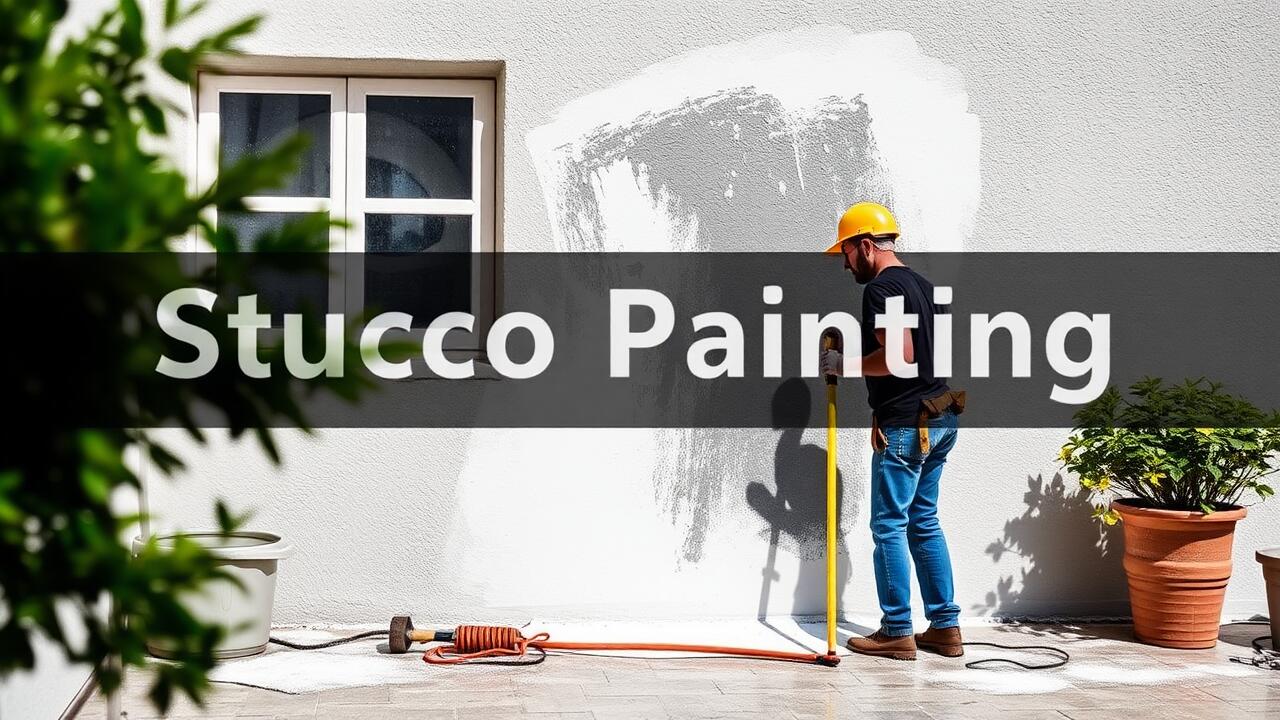
Applying the Primer
Applying primer to stucco surfaces is a crucial step that enhances paint adhesion and extends the life of the finish. The texture of stucco can create challenges for paint application; thus, a high-quality primer ensures a solid foundation. It is essential to choose a primer specifically designed for masonry surfaces. This allows for better penetration into the porous texture of stucco, promoting a more uniform appearance once the final coat is applied.
For those considering a stucco painting project in North Hollywood, Los Angeles, proper primer application is even more critical due to the region’s unique climate factors. Local weather conditions, including humidity and temperature fluctuations, can impact the drying times of both primer and paint. Taking the time to carefully apply the primer will help ensure a successful and durable finish, making it a vital step in the overall painting process.
Importance of Primer on Stucco
Applying a primer before painting stucco is essential to ensure proper adhesion and longevity of the paint job. Primers create a necessary barrier that enhances the bond between the stucco surface and the paint. This is particularly important in areas like North Hollywood, Los Angeles, where the varied climate can affect paint performance. Without a primer, paint may peel or crack over time, diminishing the aesthetic appeal of the property.
Choosing the right primer specifically designed for stucco can significantly impact the results of your paint job. These primers often contain properties that help resist moisture, mold, and mildew, which are critical factors in maintaining the integrity of stucco surfaces. In regions such as North Hollywood, Los Angeles, where humidity levels can fluctuate, using a quality primer ensures a more durable finish, ultimately saving homeowners from the expense of frequent repainting.
Selecting the Right Climate
Selecting the right climate is crucial for ensuring successful spray painting on stucco surfaces. The conditions under which the painting occurs can significantly impact the adhesion and longevity of the paint. Generally, mild temperatures with low humidity are ideal for achieving a smooth and even finish. High humidity can lead to extended drying times and increase the risk of mold or mildew growth beneath the paint, potentially damaging the stucco.
For those considering Stucco Painting in North Hollywood, Los Angeles, it is important to monitor local weather forecasts closely. Ideally, choose a day when temperatures are between 50°F and 85°F to promote proper curing and drying of the paint. Additionally, avoid windy days, as this can hinder application and cause overspray, leading to uneven results. Planning your project around these conditions can enhance the overall appearance and durability of the finish.
Ideal Weather Conditions for Painting
When planning for stucco painting in Boyle Heights, Los Angeles, weather plays a crucial role in ensuring a successful application. Ideal conditions would involve a mild day with low humidity levels. High temperatures can cause paint to dry too quickly, leading to unsightly finishes, while cold weather could hinder adhesion and extend the drying time.
It is important to check the forecast for any impending rain. Wet surfaces can interfere with the primer's ability to adhere, resulting in potential peeling or blistering over time. Windy conditions should also be avoided since they can affect the spray technique, leading to uneven application and overspray. Proper weather conditions contribute significantly to the overall quality of the paint job.
Layering the Paint
When it comes to layering paint on stucco surfaces, achieving an even finish is crucial. Start by applying a thin, even coat of paint, ensuring it penetrates the textured surface properly. Use a high-quality spray gun or roller designed for textured surfaces to help minimize drips and runs. Inspect the first layer once it dries; if areas appear uneven or missed, a second coat will provide better coverage. Pay attention to the edges where the stucco texture meets other surfaces to create a seamless transition.
For those engaged in stucco painting in North Hollywood, Los Angeles, the layering process requires careful consideration of the paint type and technique. Choose high-quality, weather-resistant paints suitable for exterior use. Allow adequate drying time between layers to avoid imperfections. The goal is to enhance both durability and appearance while protecting the stucco from environmental wear. Following these practices can contribute to a long-lasting and visually appealing finish.
Tips for Even Coverage
Achieving even coverage when spray painting stucco requires careful attention to technique. Begin by holding the spray gun at a consistent distance from the surface, typically around 12 to 18 inches. This distance helps to prevent over-spraying and creates a more uniform application. Move the gun in consistent, steady strokes, overlapping each pass slightly with the previous one. This method ensures that no patches are left unpainted and that the paint is distributed evenly across the textured surface of the stucco.
When working on projects like Stucco Painting in Downtown Los Angeles, Los Angeles, it's vital to be mindful of the texture's effects on coverage. The texture of stucco can cause paint to settle unevenly if not applied correctly. To counter this, consider applying multiple thin coats rather than one thick coat. Each layer should dry completely before adding the next, allowing the paint to adhere properly. This approach not only enhances the overall finish but also improves durability against the elements prevalent in the area.
FAQS
Why is primer important when spray painting stucco?
Primer is crucial for spray painting stucco as it helps the paint adhere better to the surface, improves coverage, and enhances the longevity of the paint job by preventing peeling and fading.
What are the ideal weather conditions for spray painting stucco?
The ideal weather conditions for spray painting stucco include mild temperatures (between 50°F and 85°F), low humidity, and no rain in the forecast to ensure the paint dries properly and adheres well.
How can I achieve even coverage when layering paint on stucco?
To achieve even coverage when layering paint on stucco, use a consistent spray technique, maintain the same distance from the surface, and overlap each pass slightly. Applying multiple thin coats rather than one thick coat will also help.
Can I spray paint stucco during high humidity?
It is not recommended to spray paint stucco during high humidity, as it can affect the drying time and lead to issues like bubbling or poor adhesion of the paint.
What type of paint is best for spray painting stucco?
The best type of paint for spray painting stucco is an exterior acrylic latex paint, as it provides excellent adhesion, flexibility, and resistance to fading and mildew, making it ideal for outdoor surfaces.
